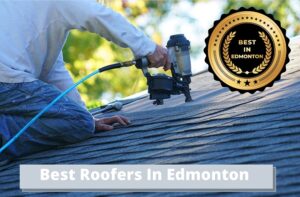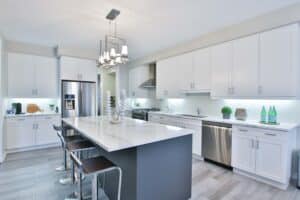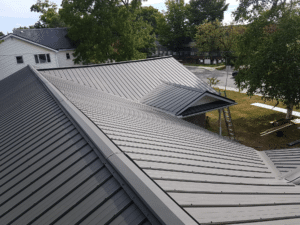
A house is a valuable investment, but one that needs the right care to maintain that worth. When your old roof needs replacing, you want a new material that will look good and add both protection and value. With so many different materials available, such as wood or asphalt, it can be hard to know the best choice.
More homeowners are upgrading their homes with metal roofing. It’s gained a reputation for being a durable, low-maintenance, and long-lasting roofing material. Still, it’s important to know about metal roofing pros and cons before deciding. Once you know all the benefits and considerations, you can make a more informed decision for your new roof. First, let’s talk about the types of metal roofing available.
Table of Contents
ToggleTypes of metal roofs
Metal roofs refer to four different types of metals that are available as roofing materials. Each metal offers a different style and appearance for your home and varies in price. Like metal roofing in general, each type of metal has its pros and cons. To understand the general benefits of metal roofs first means understanding each type of material. The most common metal is steel, but other options include copper, aluminum, and zinc.
Steel
Steel is the most commonly used and known material for metal roofs. It is made from a blend of iron and other metals such as zinc. Despite being more energy-intensive to make, it is one of the most recycled materials making it extremely green. Among the types of steel roofing, there are galvanized, galvalume, and weathering steel. Galvanized is the most common type used for steel roofing.
Galvanized: Has a layer of zinc to help protect against any corrosion and extend steel’s lifespan.
Galvalume: Uses a mixture of zinc and aluminum to strengthen and protect the steel. The aluminum protects against corrosion, such as for homes near coastal areas.
Weathering steel: This type is typically used for accent roofing, as the material is meant to intentionally rust. As the outer layer rusts, the inner layer of steel stays protected.
Pros: Steel is the most cost-effective option of all the metal roofs, making it one of the most common choices. It can even mimic other metals and materials’ appearances, making it easy to customize. Its strength also makes it durable against weather damage, such as hail or strong winds. It is known to last decades, even 50 years or longer.
Cons: Protective coatings and galvanized steel will help slow corrosion and rust, but there is no absolute preventative guarantee. The right care and maintenance will help, but re-painting may be needed to cover any rust spots.
Copper
Despite copper typically being associated with commercial buildings, it’s steadily becoming popular among residential homes. Copper itself is a timeless material that can easily last for a lifetime and continue to look good throughout those years. It’s also 100% recyclable, making it an ideal choice for greener homes.
Pros: One of the main benefits of copper is that it’s completely maintenance-free. It’ll never rust, corrode, or need to be re-painted or resealed. It’s also extremely durable against weather damage and will go a long way with boosting home value, with a return on investment of 85%.
Cons: The price of copper is a big downside as it is costly—much more so than other materials. Copper also will slowly fade as it oxidizes, and its colour will change to a green or turquoise shade. Some homeowners enjoy this transition, but others don’t. Since copper is a softer metal and can be dented, it’s not recommended for areas that get heavy hail.
Aluminum
For coastal homes, aluminum is the recommended choice for metal roofing. Unlike other metals, aluminum is highly resistant against salt corrosion. Despite being a light-weight metal, it is incredibly strong and long-lasting. Installation cost, time, and labour will all be less, thanks to its easy-to-handle weight.
Pros: Aluminum also requires no maintenance once professionally installed. Its high strength rating means that it is not prone to denting or other weather damage. The wide range of styles, colours, and design lets homeowners completely customize their new roof.
Cons: Much like copper, aluminum is also a costly investment, although not as high as copper. It is typically painted with a coating to help protect it and prevent any patina changes. This coating will need to be reapplied every few years.
Zinc
As one of the exotic metal roof options, zinc isn’t as widely available as other metals. That said, if available, zinc is one of the best metals to use. Its durability and longevity are higher than other metals and is steadily making it a popular choice. If a green roofing option is a priority, then zinc is one of the greenest options. It is 100% recyclable and uses the least amount of energy to process.
Pros: Zinc has a natural ability to “heal” itself, making repairs practically unnecessary. The natural patina layer on zinc will, over time, reform and essentially repair any scratches on the roof. It is also resistant to insects, fire, and mildew, and the surface is free of any toxicities.
Cons: Zinc requires specialized expertise to install correctly, which can cost more as there aren’t as many zinc roofing experts. Unless carefully installed, moisture can become trapped underneath and lead to severe water damage to the roof.
Metal roof appearances
Appearance-wise, metal roofs also can widely vary and even mimic the look of other materials. The system design of a metal roof includes corrugated, standing seam, or shingles. Metal roofing pros and cons for appearances come down to cost or personal preference.
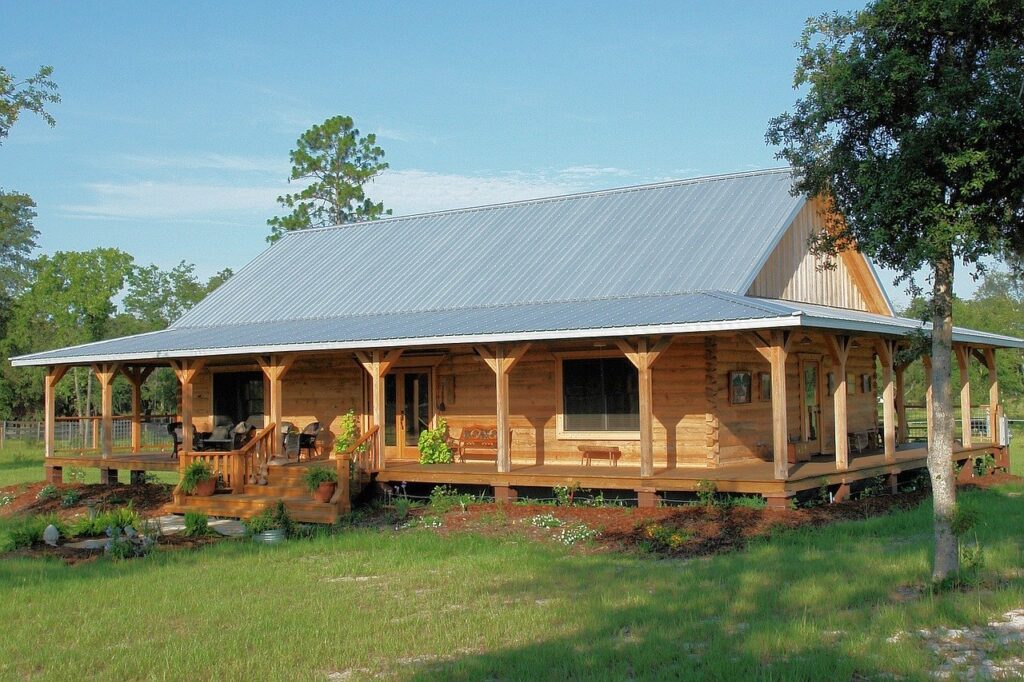
Corrugated
Corrugated is most commonly seen on commercial buildings, although it can be used for residential homes as well. You’ll often see this type of roofing in rural areas, especially if the area gets a lot of snow. The nature of this roof allows snow to slide off easily in the winter. These roofs are typically made from galvanized steel or aluminum for both protection against corrosion and added strength. The system uses interlocking metal sheets to create an alternating ribbed design. This design creates a more rustic style when used for residential homes. The fasteners are also exposed, meaning they need to be retightened every 10 years and carefully maintained. If not, water can easily seep into the loose openings around the fastener. This style of roofing does offer a longer lifespan as well as a unique rustic aesthetic.
Standing seam
Despite being the more expensive option, the standing seam style is quickly rising in popularity. It offers better weather protection and adds a sleeker, more modern appeal to any home. Unlike corrugated, standing seam uses an interlocking seam system with vertical panels. The fasteners are also hidden, so there is less risk of any leaks as the metal expands and contracts. As a result, standing seams roofs also need the least amount of maintenance and make your roof much more durable.
Shingles
Metal shingles offer the best of both shingle design and the durability of metal. Their unique, appealing aesthetic easily boosts both curb appeal and value to any home. Compared to standing seam, metal shingles are the least expensive option, though just as durable. They can be made to resemble cedar, tile, composite, and more. Metal shingles also come in a wide variety of colours that further customize their curb boosting appeal.
Knowing the different types of metals will help to know what are the disadvantages of metal roofing as well as its advantages. With that in mind, it’s time to look at the more overall advantages of owning a metal roof.
Advantages of metal roofing
One of the many reasons homeowners choose metal roofing is the long-term investment and value it offers. As a superior material, metal only gets better with age, unlike other roofs that will deteriorate. Here a few more of the many benefits and reasons that homeowners go for metal roofing:
Strength and lifespan
Across all types of metal roofs, the strength and long lifespan of each type is an undeniable benefit. Once you invest in a metal roof, it’s guaranteed to last a lifetime compared to other options. For example, asphalt roofs will last between 15 to 20 years, while wood roofs come closer at 30 to 40 years. Still, other roof options require more maintenance and upkeep to ensure that long lifespan. Metal roofing, with a lifespan of 40 to 70 years, can last that long with minimal to no maintenance.
Basic maintenance
Aside from basic care and cleaning, metal roofs don’t require much else. Unlike other roofs that need resealing, metal roofs are the opposite. Metal produces a natural patina that protects it from most types of damage that affect other materials. The only upkeep required is basic cleaning and routine inspections. As with any roof system, keep the gutters clear of debris to protect your roof and home. Annual inspections by a professional will catch any potential damage before it develops and saves on costly repairs. Trimming back overhanging branches will further protect your roof from any scratches or scuffs.
Major energy savings
One main benefit of metal roofing is the significant energy savings it provides for your home. In the summer, metal will naturally reflect the light and keep your home cool. According to Metal Roofing Alliance, metal roofs can save 40% on energy costs. That’ll not only help lower cooling costs but also extend the lifespan of your HVAC. An added reflective coating can further minimize any heat absorption.
Even in the wintertime, metal roofs act as an insulator for indoor temperatures, keeping your home just as warm. The heat will stay inside so that your furnace doesn’t have to work quite so hard. Year-round, a metal roof will provide great energy savings and improve overall comfort.
Can be installed over old roofing
Metal roofs can be installed over your old roof, which saves both money and the mess. In this case, metal roofs are installed with a vented system to help avoid moisture buildup. With light-weight metals such as steel, this method won’t add unnecessary weight to your roof. Before you do, though, check the local building codes to see what is allowed. Most will allow only two layers of roofing before you have to tear off the old completely. This is something you can ask your roofing contractor.
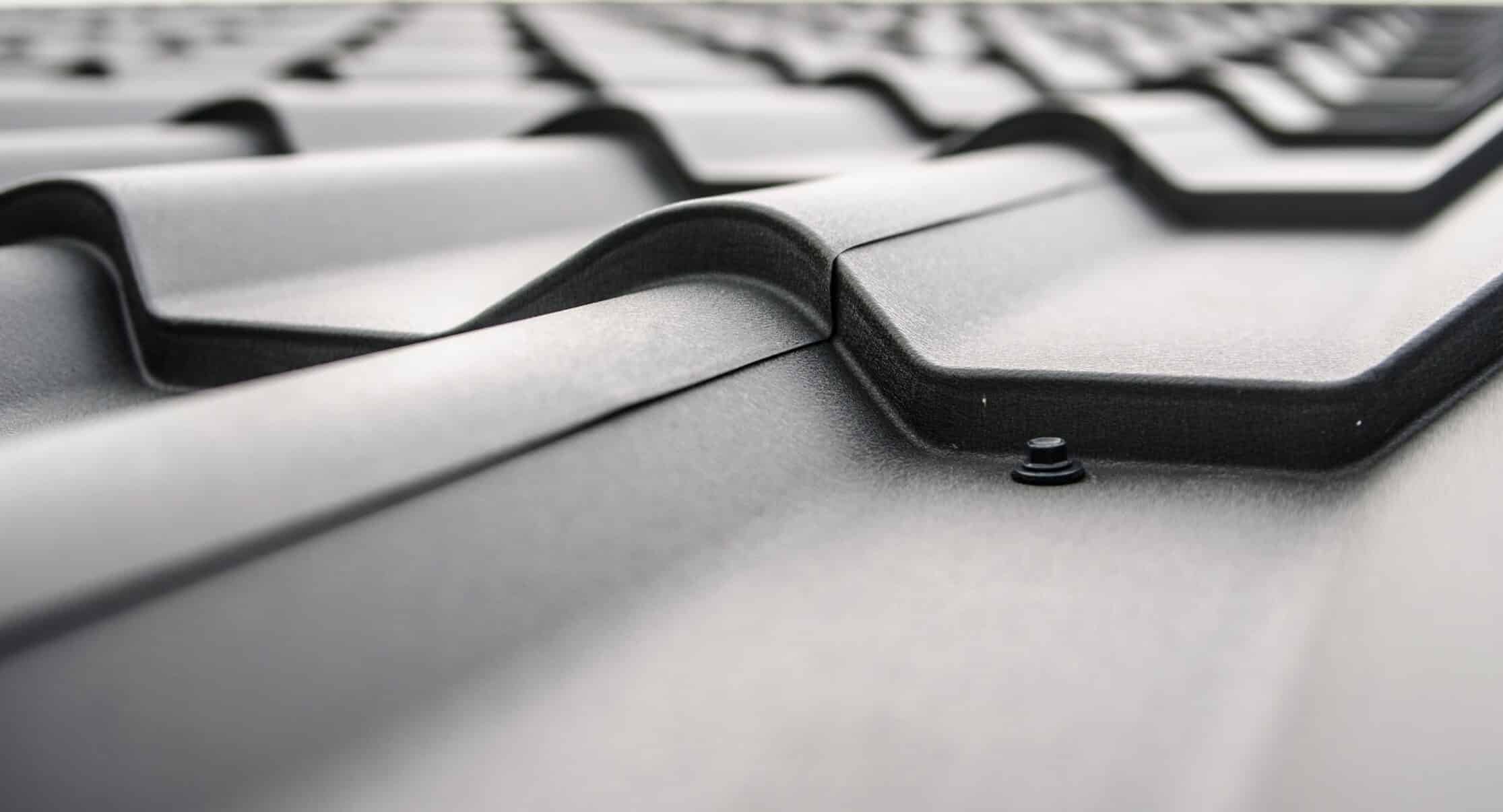
Disadvantages of metal roofing
What are the disadvantages of a metal roof? Just like knowing the benefits, it’s important to consider the opposite. Knowing both sides will help when making a more informed decision.
Higher cost
The cost of metal roofs is one of the more prominent disadvantages. Most types of metals are premium materials, meaning they come with premium price tags. The cost will also vary depending on what type of design you choose, such as standing steam or shingle metal roofs. The initial upfront cost may deter some homeowners, but also consider the long-term benefits. With the right budget, investing in metal roofing will pay for itself over the years and be well worthwhile.
Needs professional installation
When choosing a metal roof, it’s essential to choose a qualified professional to handle the installation. As temperatures heat up and cool, metal roofs will expand and contract in response. If the roof is installed incorrectly, it can lead to severe damage, leaks, and costly repairs. With a skilled and experienced professional, though, they will ensure the fasteners and seams can handle the strain and shifts without breaking. The downside is that there are fewer roof experts that can install metal roofs. With more specialized metals as well, such as zinc, the number of available roofers drops even more.
Dents and corrosion
While durable, any metal roof is still at some risk of getting dented, especially during heavy hail or from fallen branches. Some types of metals will resist denting better, but they cost more as a result. Normal-sized hail won’t cause damage, but areas that see severe hailstorms should be taken into consideration. Corrosion, especially for coastal homes, will also be a factor to consider. Aluminum is resistant to corrosion, but not all other metals are as well. The best thing to do for both dents and corrosion is to check for a manufacturer’s warranty. Depending on your location and the company, some will offer warranty protection against these.
Myths of metal roofing
Some myths of metal roofing get grouped into the disadvantages of owning a metal roof. While some are complete misconceptions, others hold some truth but can easily be fixed. When it comes to metal roofing pros and cons, it is just as important to know what myths are true or not.
1. Metal roofs attract lightning
This is a common misconception, mostly because metal is typically conductive. In reality, metal roofs don’t attract lightning any more than other roofing materials.
2. Metal roofs are loud
Without added insulation, metal roofs may be louder during rainstorms when compared to other materials. That said, investing a bit into a layer of insulation on the roof deck will muffle any loud noises. In fact, it may even make metal roofs quieter than other roofs.
3. You can’t walk on metal roofs
If you DIY this without any experience, then that may be true. Otherwise, a professional will know how to navigate your roof safely. For any annual inspections, repairs, or maintenance, its best to call in a pro.
4. Metal roofs eventually rust
That is only true if you choose weathering steel, which will deliberately rust over a longer period. Otherwise, metal roofs are highly resistant against rust or can be coated with an extra protective layer.
5. More prone to leaks
As long as a metal roof is properly installed and secured, leaks are less likely than with other roofs. Metal will expand and contract, but a skilled professional will ensure it can do that without damage. Even in winter, snow will slide off the roof instead of building up and causing ice damns. That not only keeps your roof in top condition year-round, but it helps protect your home from damage as well.
Is metal roofing for you?
As with any roof, there is no right or wrong answer for what is best for your home. The advantages of metal roofing are what appeal to many homeowners and have made it so popular. That said, when considering metal roofing, consider your home’s needs and your personal preference. These may include things such as cost, appearance, value, and long-term investment. If it’s right for you, you won’t go wrong! Otherwise, talk to a professional roofer and get their help and suggestions for your home.
Find a RenovationFind certified metal roofing company now!
| Alberta | British Columbia | Saskatchewan |
| Metal Roofing Edmonton | Metal Roofing Kelowna | Metal Roofing Regina |
| Metal Roofing Calgary | Metal Roofing Vancouver | Metal Roofing Saskatoon |
| Metal Roofing Victoria | ||
| Manitoba | Nova Scotia | Newfoundland |
| Metal Roofing Winnipeg | Metal Roofing Halifax | Metal Roofing St. John’s |
| Ontario | Quebec | New Brunswick |
| Metal Roofing Toronto | Metal Roofing Montreal | Metal Roofing Fredericton |
| Metal Roofing Barrie | Metal Roofing Quebec City | Metal Roofing Moncton |
| Metal Roofing Hamilton | Metal Roofing Saint John | |
| Metal Roofing Kitchener | ||
| Metal Roofing London | ||

